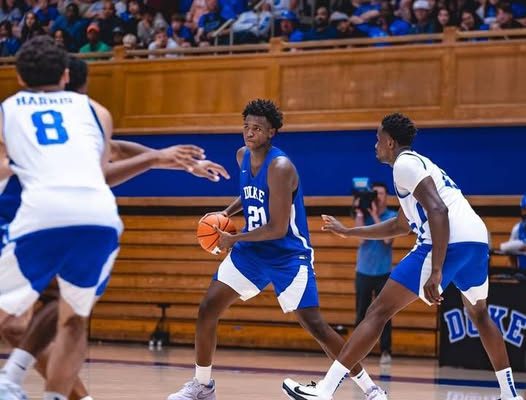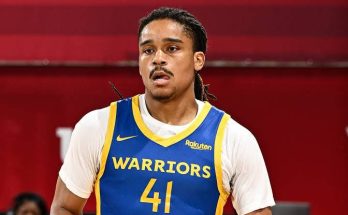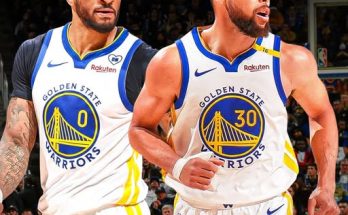The summer months in college basketball are often described as quiet stretches where players train behind closed doors, teams try to retool their chemistry, and coaches take stock of what they truly have heading into the fall. But in Durham, North Carolina, where basketball is less a sport and more of a religion, the summer is anything but quiet. Duke’s practices have already taken on a life of their own, with insiders, former players, and those close to the program describing them as some of the most intense offseason sessions in recent memory. What stands out about these practices is not only the competitive spirit and the hunger among returning veterans, but also how quickly the thin line between genuine star power and overblown hype is being exposed. For a program that constantly battles the perception of being built on reputation and media buzz, this summer is already shaping up to be the kind of proving ground that separates talk from truth.
What makes these practices so notable is the environment cultivated by Jon Scheyer, who is now firmly stepping out of Mike Krzyzewski’s shadow and shaping the program in his own vision. Scheyer has been intentional about not allowing the team’s highly ranked recruiting classes to simply rest on accolades. For years, Duke has been synonymous with five-star recruits and NBA-bound prospects, but that reputation often comes with players who shine more in mixtapes and preseason hype reels than in the relentless grind of practice. This summer, however, Scheyer and his staff have set a clear tone: talent is not enough, effort is mandatory, and every possession matters even in August. By establishing that standard early, he is sending a message that resonates through the locker room—there will be no hiding in Durham.
Already, reports have surfaced of grueling scrimmages that resemble midseason clashes more than offseason drills. Veteran players are setting the tone by challenging newcomers, and those who cannot rise to the occasion are being exposed quickly. Practices are not just about running plays or building chemistry, but about forcing young players to either adapt to the physicality of college basketball or risk being swallowed up by it. That intensity has created a natural separation between players who thrive under pressure and those whose reputations were built on softer competition. In essence, the hype surrounding incoming freshmen or transfers does not matter the moment the ball is tipped at practice. What matters is how they respond when matched against peers who are just as talented, just as athletic, and much hungrier.
This reality is particularly critical for Duke given the scrutiny the program constantly faces. Every year, the Blue Devils enter the season with lofty expectations, fueled by a blend of top-ranked recruits and national spotlight. But not every highly touted prospect pans out, and for every Zion Williamson or Jayson Tatum, there are names that fade into obscurity after failing to adjust to the demands of playing at Duke. The summer sessions this year seem designed to expose weaknesses early, allowing coaches to know who they can truly count on when the season begins. Players who may have coasted through high school competition now face a crucible where their habits, toughness, and willingness to work are under the microscope. For some, it is an opportunity to elevate themselves from promising recruits to reliable contributors. For others, it’s a reality check that star rankings mean little once the real work begins.
The culture of accountability that is emerging from these practices is reminiscent of the best eras in Duke history. During the height of Coach K’s reign, the most celebrated teams were not just talented but fiercely competitive in practice. Veterans pushed rookies, walk-ons refused to back down, and every drill was treated as a proving ground. Scheyer’s version of Duke seems to be tapping into that same ethos, where competition is not an occasional spark but a daily expectation. The message is clear: iron sharpens iron, and the program will not wait until game nights to determine who is ready for the spotlight.
This approach also helps address one of the challenges modern college basketball programs face—the balance between developing players and accommodating those who may only stay for a single season before declaring for the NBA draft. With one-and-done culture still impacting programs like Duke, the ability to quickly identify who can contribute right away is crucial. Summer practices have therefore become the first filter, showing which players are ready to handle not only the physical demands but also the mental grind of playing for one of the most visible programs in the country. For those who cannot adjust, the reality is stark: Duke does not have time to carry reputations.
There is also a psychological component at play. By fostering an environment where players cannot hide behind hype, Scheyer is instilling resilience. College basketball is unforgiving, especially for a program with a target as big as Duke’s. Every opponent sees beating Duke as a statement win, meaning that the Blue Devils cannot afford to rely on talent alone. Players who learn early how to handle adversity, push through fatigue, and respond when challenged are the ones who will be battle-ready when the season starts. Those who shrink under pressure in practice will likely find themselves buried on the bench once games begin.
For the fanbase, hearing about these summer battles only raises anticipation for the season. Duke fans have long been accustomed to hearing glowing reports about incoming players, but there is a different buzz when those reports highlight toughness, grit, and a relentless work ethic rather than flashy skill sets alone. Supporters know that championships are not won on highlight reels but in practices where habits are formed. The idea that this team is already sharpening itself in such a demanding way provides a sense of confidence that they will be prepared for the inevitable challenges of the season ahead.
It also underscores an important narrative for Duke’s future. Scheyer is not simply trying to replicate the formula of the past but to evolve the program in a way that ensures sustained competitiveness. By setting the tone now, he is building a culture where accountability and effort are valued as highly as raw talent. That kind of environment not only produces better teams but also attracts the right kind of recruits—players who want to be pushed, who welcome competition, and who understand that being part of Duke means constantly proving yourself.
In many ways, the separation between true stars and empty hype is not just about basketball skills but about mentality. The players who emerge from these practices as leaders are not necessarily the ones with the most polished moves or the highest vertical jumps. They are the ones who communicate on defense, who dive for loose balls, who push themselves when fatigued, and who make teammates better through their presence. Those qualities often translate into winning basketball far more than individual talent alone. On the other hand, players who rely too heavily on reputation, who coast through drills, or who disappear when challenged quickly reveal themselves as liabilities. That distinction is becoming clear in Durham, and it is shaping how the roster hierarchy may look when the season begins.
Ultimately, what is happening in Durham this summer speaks to a broader truth about college basketball. In an era where hype often outpaces production, and where social media highlights can create inflated expectations, the real measure of a player comes in environments where none of that matters. In Duke’s practice gym, there are no cameras, no viral clips, and no forgiving audiences. There is only competition, sweat, and the demand to prove yourself possession by possession. That kind of crucible not only reveals character but builds it.
As Duke looks ahead to another season where expectations will inevitably be sky-high, the foundation being laid in these summer practices may prove more important than any recruiting ranking or preseason poll. By forcing players to confront their weaknesses, by demanding effort on every drill, and by refusing to allow reputations to carry weight, the Blue Devils are creating a team that could be defined less by hype and more by substance. And in a sport where substance ultimately wins championships, that is the most promising development of all.
In the end, the phrase “no hiding in Durham” is more than just a catchy description of these practices—it’s a philosophy. For the players, it means understanding that every day is a chance to prove themselves, and every mistake is an opportunity to learn. For the coaches, it means cultivating an environment where standards are non-negotiable. And for the fans, it means looking forward to a season where the Blue Devils will not just rely on talent, but on the toughness, resilience, and clarity forged in the heat of summer competition. In that sense, the practices taking place now may very well be the defining factor that separates Duke from the pretenders in the months ahead.



